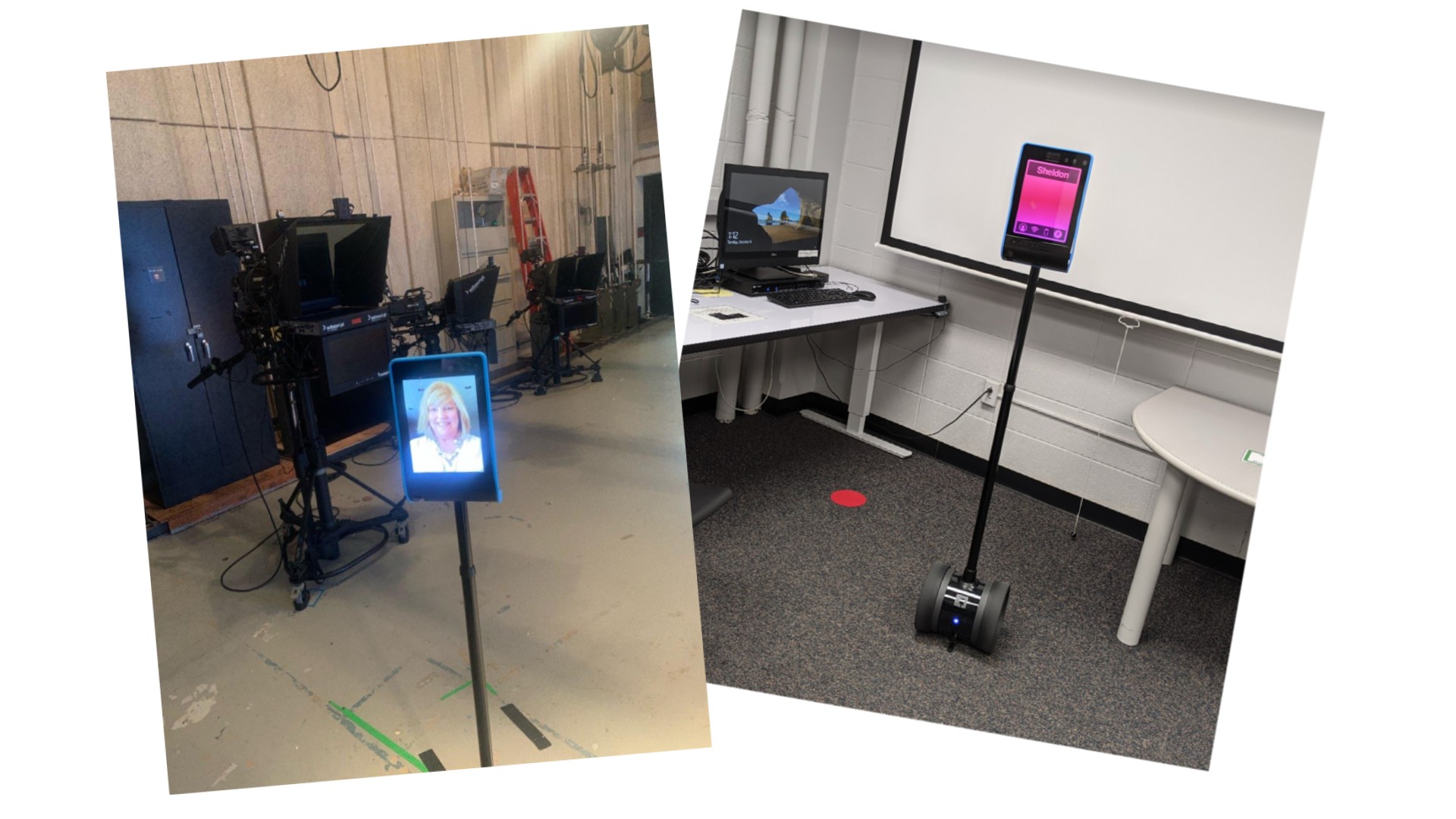When Amy Caples, assistant professor of instruction in the Media Studies and Production Department at Klein College of Media Communication, found out that COVID-19 concerns would not allow her to teach her popular Media Performance course in-person, she decided to get creative. Securing an iPad to a mount and a medical IV pole, she built a prototype that would allow her to have a virtual presence in class. But Klein decided to assist her by purchasing a telepresence robot named “Shel” — a gender-neutral variant of “Sheldon,” the robot’s original name — that is similar in stature to Caples’ prototype and can be controlled wirelessly. On Monday, Shel made its debut in Caples’ two sessions of Media Performance.
Media Performance requires students to practice their on-camera performances in and out of a studio. Without Caples in a studio to instruct students, the course would be nearly impossible to achieve. However, the introduction of Shel was a great solution: the course — which was previously exclusive to online Zoom sessions — can now incorporate in-person sessions.
“When I first talked about it at the beginning of the semester. I think it was so foreign [for students] like, ‘What in the world? That's never going to happen,’” Caples says. “And then the thing showed up and I shared a picture with them on Monday, and they were [like] ‘Game on, let's do this.’ And I think the only reason it's going to work is that we are at mid-term and they are comfortable with me and I think they're going to be comfortable with me in that format.”
Temiloluwa Oshadiya, a first-year student in the media studies and production graduate program, serves as the “robot coordinator” for Media Performance this semester. Oshadiya is tasked with monitoring Shel during each class session. She received preliminary training on the robot before its introduction into the course and is confident that she will be able to guide Shel whenever necessary. Despite a few ongoing questions about Shel’s mobility, battery life and Wi-Fi coverage, she found that, overall, it is an innovative classroom device.
“I’m still really excited to be watching this teaching change in technology,” Oshadiya says. “We’re all growing into this new normal trying to adapt. So I think this is a big way of adapting to the new teaching standards that we have. So I’m just really excited to be a part of it.”
Caples and Oshadiya are working with Klein’s technical team to ensure Shel’s successful run in the course. Kyle Nesta, director of technical operations, is in the process of learning how to make the most of Shel’s features along with studio engineer Ben Carotenuto. However, Nesta says that operating the robot is a “pretty seamless experience.”
Shel is an important technological advancement for Klein, Caples says. In addition to opening up new opportunities for technology to work its way into the college’s curriculum, she believes that a device such as Shel could be advantageous for students with disabilities who may not be able to physically attend courses. Additionally, since Media Performance prepares students for the many possibilities that can arise in a control room, Caples hopes that students can now properly handle challenging technical situations that they may come across in their professional careers.
“I'm so very grateful to Klein to be so visionary in handling this issue, because I have been teaching this class for 15 years and it's a big part of our curriculum and the thought that we would be somehow shortchanging students by changing it so radically for reasons that are no fault of theirs — that's what was painful to me,” Caples says.
Shel will be a part of Caples’ course for the remainder of the semester. In the meantime, Oshadiya and the technical team are working together to ensure that Shel is properly handled and facilitated on campus so that it can remain a useful device for students’ learning.

